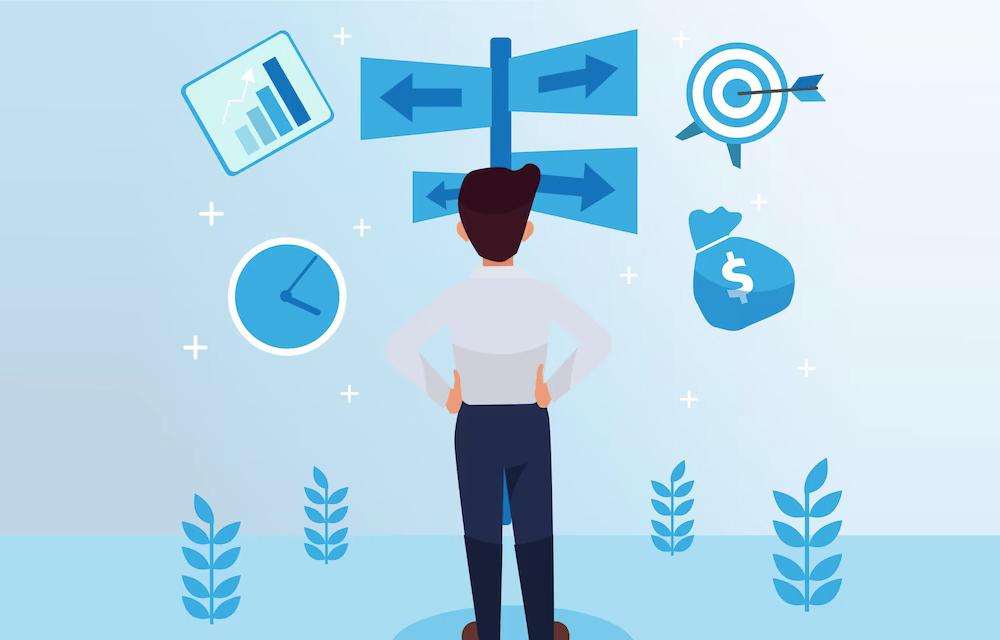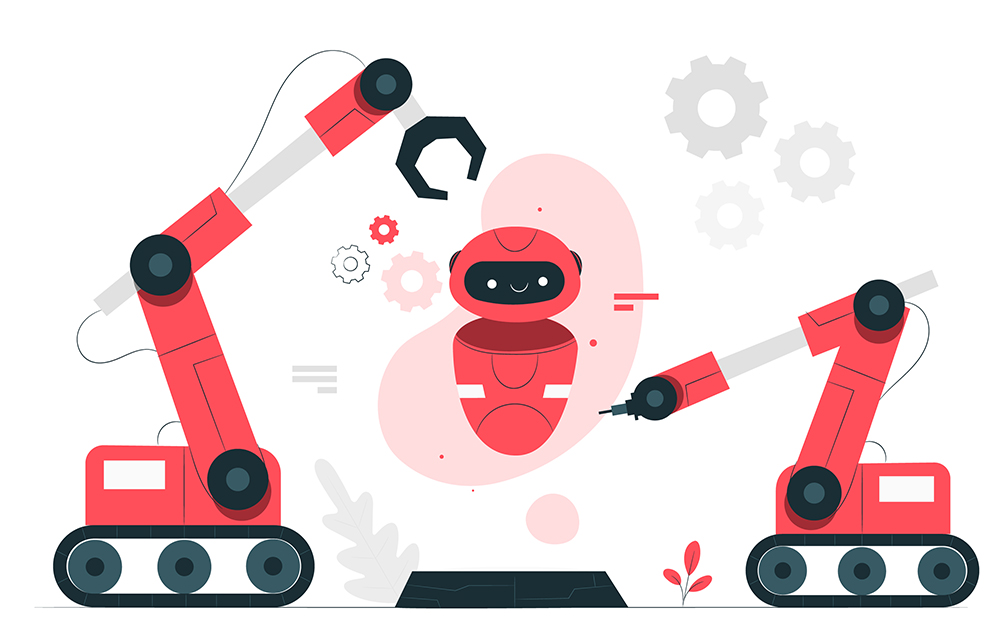It's important to acknowledge the vital role played by administrative professionals in the success of any busi...
Brickwork Blogs


Introduction
In a world teeming with options, from the cereal aisle in a grocery store to life-altering career choices, the concept of choice paralysis has become an ever-present challenge. Choice paralysis, often coined as the "paradox of choice," refers to the psychological state where an individual is overwhelmed by an abundance of options, leading to indecision or making poor choices.
Imagine standing in front of a shelf stacked with countless varieties of similar products, each boasting unique features and benefits. Instead of feeling empowered by the array of choices, the mind is left in a state of confusion and uncertainty, unable to decide due to the fear of selecting the wrong item or missing out on a better option.
This phenomenon extends far beyond mere consumer choices; it permeates various facets of life, affecting career paths, relationships, and even day-to-day decisions. The advent of the digital age, with its endless online platforms and information overload, has only amplified this issue.
Choice paralysis profoundly impacts decision-making processes. When faced with too many options, individuals may procrastinate or avoid decisions altogether, leading to missed opportunities or a sense of dissatisfaction with the chosen outcome.
Moreover, the abundance of choices can tax cognitive resources, causing stress, anxiety, and a decreased ability to focus on what truly matters. The pressure to make the "perfect" decision amid a sea of options can be paralyzing, hindering progress and personal growth.
Join us on this journey to unravel the complexities of choice paralysis and discover actionable ways to break free from its grip, enabling you to make better decisions aligned with your goals and values.
Section 1: Understanding Choice Paralysis
In the intricate landscape of decision-making, understanding the psychological mechanisms behind choice paralysis is crucial. This section aims to unravel the complexities of why individuals often find themselves immobilized by an excess of choices.
Exploring the Psychology: At its core, choice paralysis is deeply rooted in the cognitive and emotional aspects of human psychology. Delving into the cognitive load theory, we examine how the brain processes information and the limits it faces when confronted with an overwhelming number of options. Understanding the intricacies of decision-making from a psychological standpoint lays the groundwork for devising effective strategies to counter choice paralysis.
The Role of Cognitive Overload: One of the primary contributors to choice paralysis is cognitive overload. As individuals are presented with an ever-expanding array of choices, the cognitive resources required to evaluate each option can exceed their mental capacity. This leads to a state of mental fatigue, making it challenging to make decisions effectively. We explore how cognitive overload impacts decision-making and discuss practical ways to manage and mitigate its effects.
Section 2: Common Causes of Choice Paralysis
Too Many Options: How Abundance Can Hinder Decision-Making
One of the primary causes of choice paralysis is the abundance of options. While having choices is generally considered positive, an excess of options can overwhelm individuals, making it difficult for them to assess each alternative thoroughly.
Fear of Making the Wrong Choice
The fear of making the wrong decision is a powerful force that can paralyze decision-making. In this part, we dissect the emotional underpinnings of this fear and how it can be exacerbated by societal expectations and the pressure to achieve perfection. By understanding the roots of this fear, readers can begin to address and overcome it, freeing themselves from the shackles of indecision.
Lack of Information and Analysis Paralysis
Another common cause of choice paralysis is the lack of information or analysis paralysis. When individuals feel they don't have enough data to make an informed decision, they may delay the decision-making process.
The Role of External Influences and Societal Expectations
External influences, such as societal norms, expectations, and the opinions of others, can significantly impact decision-making. Strategies for navigating external influences and aligning decisions with personal values are explored to empower individuals in making choices that resonate with their authentic selves.
Practical Strategies to Overcome Decision Paralysis
Prioritization Techniques: Identifying What Truly Matters
One effective way to combat choice paralysis is by employing prioritization techniques. This subsection explores methods for identifying and prioritizing what truly matters in the decision-making process. Whether it's using the Eisenhower Matrix to distinguish between urgent and important tasks or employing the "three priorities" rule, readers will gain insights into how to streamline their decision-making criteria.
Setting Clear Goals and Criteria for Decision-Making
Clarity of purpose is paramount when faced with choices. Here, we delve into the importance of setting clear goals and criteria before making decisions. By establishing specific objectives, individuals can narrow down their options and make decisions aligned with their overarching goals. Practical tips and examples will be provided to guide readers in articulating their goals and translating them into decision-making criteria.
Breaking Down Complex Decisions into Smaller, Manageable Steps
Complex decisions can be overwhelming, contributing to choice paralysis. In this part, we discuss the strategy of breaking down intricate decisions into smaller, more manageable steps. By simplifying the decision-making process, individuals can tackle one aspect at a time, reducing the cognitive load and making progress without feeling overwhelmed. Real-life examples will illustrate how this approach can be applied to various decision-making scenarios.
Embracing the Power of Constraints
Constraints can be powerful allies in decision-making. Whether it's time constraints, budget limitations, or other constraints, they force individuals to focus on essential factors and disregard extraneous details.
Decision-Making Tools and Techniques
Utilizing Decision Matrices and Grids
Decision matrices and grids are invaluable tools for structuring and visualizing complex decisions. In this part, we delve into the concept of decision matrices, breaking down how they can help individuals weigh different factors and options systematically. Practical examples and step-by-step guides will be provided to assist readers in creating their own decision matrices, ensuring a more methodical and organized approach to decision-making.
SWOT Analysis: Strengths, Weaknesses, Opportunities, Threats
SWOT analysis is a widely used strategic planning tool that can be adapted for personal decision-making. This subsection explores how individuals can apply SWOT analysis to assess the strengths, weaknesses, opportunities, and threats associated with various choices. Through a detailed examination of each aspect, readers can gain a holistic understanding of their options, making it easier to make well-informed decisions.
Pros and Cons Lists: A Classic Approach for Balanced Decision-Making
The classic pros and cons list is a straightforward yet powerful technique for evaluating choices. Here, we discuss the art of creating comprehensive pros and cons lists, emphasizing the importance of considering both the positive and negative aspects of each option. Tips on how to weigh the significance of different factors and prioritize the most critical considerations will be provided, making this timeless method more effective.
Seeking Advice and Input from Trusted Individuals
Sometimes, an external perspective can offer valuable insights. This part explores the importance of seeking advice and input from trusted individuals in the decision-making process. Whether it's consulting with mentors, friends, or family members, the input of others can provide fresh perspectives, challenge assumptions, and contribute to a more well-rounded decision-making process.

Conclusion
In the intricate maze of choices that define our lives, overcoming choice paralysis emerges as an essential skill for navigating through this abundance of options. The exploration of choice paralysis has unveiled the psychological complexities that underlie our decision-making processes. From the overwhelming cognitive load caused by an excess of choices to the fear of making the wrong decision, we've dissected the factors contributing to this paralyzing phenomenon.
Ultimately, this exploration into overcoming choice paralysis has been about empowering individuals to wield their decision-making process with confidence and clarity. Decisions shape our paths, and by understanding the nuances of choice paralysis, equipping ourselves with effective tools, and fostering a mindful approach, we transcend the labyrinth of choices. Each decision becomes a deliberate step forward, reflecting our values, aspirations, and aspirations for a more fulfilling life. As we step out of the maze, may this newfound wisdom guide us toward decisions that resonate deeply with our true selves.


